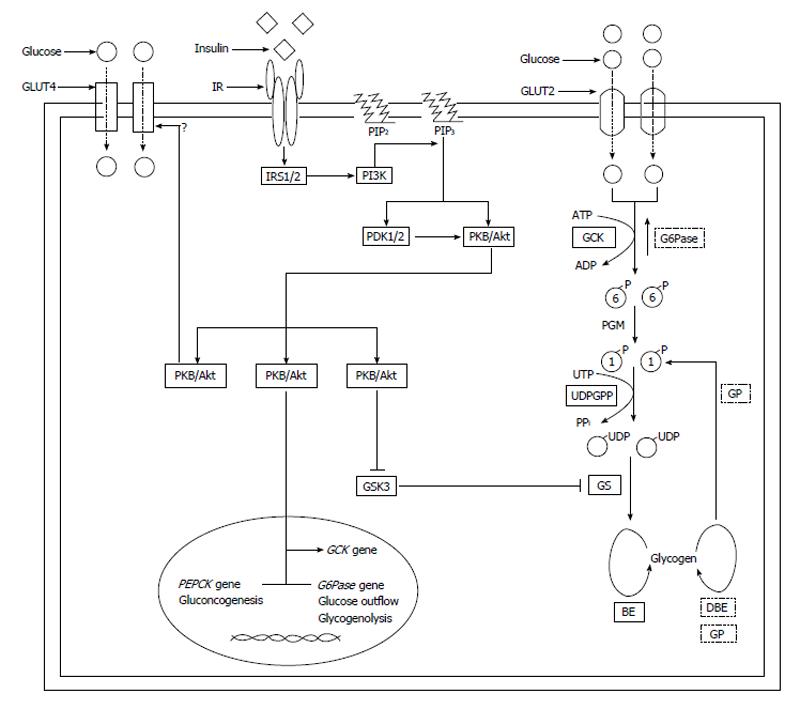Copyright
©2014 Baishideng Publishing Group Inc.
World J Diabetes. Dec 15, 2014; 5(6): 882-888
Published online Dec 15, 2014. doi: 10.4239/wjd.v5.i6.882
Published online Dec 15, 2014. doi: 10.4239/wjd.v5.i6.882
Figure 1 The metabolic pathways of glycogen synthesis in hepatocytes.
GLUT: Glucose transporter; IR: Insulin receptor; PIP2: Phosphatidylinositol (3,4)-bisphosphate; PIP3: Phosphatidylinositol (3,4,5)-trisphosphate; IRS: Insulin receptor substrate; PI3K: Phosphotidylinositide-3-kinase; PDK1/2: 3-phosphoinositide-dependent protein kinase 1 and 2; PKB/Akt: Protein kinase B; GCK: Glucokinase; G6Pase: Glucosio-6-phosphatase; PGM: Phosphoglucomutase; UDPGPP: UDP-glucosepyrophosphorylase; GP: Glycogen phosphorylase; GSK3: Glycogen synthase kinase 3; GS: Glycogen synthase; PEPCK: Phosphoenolpyruvate carboxykinase; BE: Branching enzyme; DBE: Debranching enzyme; UTP: Uridine triphosphate; PPi: Pyrophosphate.
- Citation: Giordano S, Martocchia A, Toussan L, Stefanelli M, Pastore F, Devito A, Risicato MG, Ruco L, Falaschi P. Diagnosis of hepatic glycogenosis in poorly controlled type 1 diabetes mellitus. World J Diabetes 2014; 5(6): 882-888
- URL: https://www.wjgnet.com/1948-9358/full/v5/i6/882.htm
- DOI: https://dx.doi.org/10.4239/wjd.v5.i6.882









